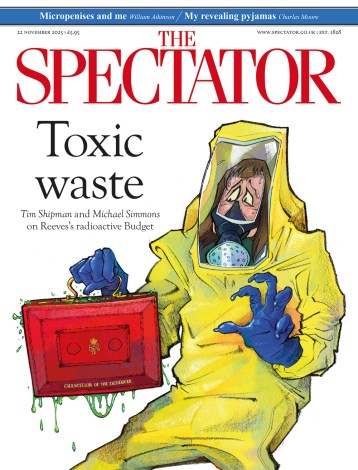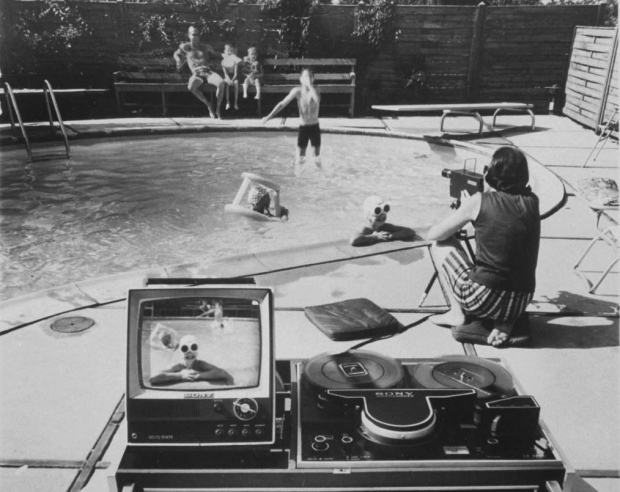Here is a Japanese fairy tale for Christmas. An allegory of insight, opportunism and a fall from favour. It is 1945. Japan is devastated and disgraced, but two bright young men, Akio Morita and Masaru Ibuka, the first a salesman, the second an engineer, have a plan to turn toxic ashes into precious metal.
They have discovered a curious typewritten document published by the Civil Information and Education division of the US Occupation Forces. It is called ‘999 Uses for a Tape-Recorder’. In those days, people needed to be told these things. Inspired, they form a company called TTK and Ibuka writes in its Purposes of Incorporation that it will make ‘imaginative use of technology …to help restore national culture’.
By 1950, Morita and Ibuka have designed and manufactured their own G-Type tape-recorder. As plastic is unavailable, its recording medium is magnetised paper, which they call Soni-Tape. This paper is so fragile that the tape-transport mechanism must be made to very high tolerances, a technical advantage that TTK will in future exploit.
In 1953, wearing a dashing white suit, Morita travels to the United States. Here he discovers that the sleepy cheese-smelling gaijin have patented something called a transistor, but have decided it has no commercial applications. Wisely, Morita-san sees things rather differently.
Back in Tokyo, Morita briefs his technicians to create a transistor radio. Light, efficient, tiny, inexpensive and portable, the TR-55 appears in 1955. At this point, one of the friendly Japanese gods, perhaps the jovial Hotei, guardian of barmen — Morita comes from a sake-brewing family — intervenes decisively and inspires Morita to his best ever decision.
Guessing that Anglophone export markets will struggle to say Tokyo Tsushin Kogyo Kabushiki Kaisha (or TTK, Tokyo Telecommunications Company), Morita decides to rename his company Sony. This is a splendid coinage in Japlish that evokes both sonus, the Latin word for sound, and ‘sonny’, the affectionate name for a male child. No one bothers much about the spelling or the pronunciation.
When a vast consignment of TR-55 radios is sensationally stolen from a New York warehouse, the publicity establishes Sony’s reputation for desirability and many suspect that Morita, who will soon become known as ‘Mr Transistor’, was not entirely dismayed by the theft since he plays it so well to his company’s reputational advantage.
Sony now begins a 25-year period of astonishing creativity, unrivalled in the history of consumerism, making products that are not merely useful or convenient, but actually change human behaviour. And often these same products have an exquisite lapidary quality that, at some level, reminds customers of the great Japanese traditional art forms where fine materials, superb detail and miniaturisation are prized. Netsuke, for example.
A radical innovation occurs almost every year. There was a portable transistor television with an eight-inch screen in 1959 and an even cuter one with a five-inch screen three years later. In 1965 Sony sold its first (black-and-white) video-recorder. In 1966 integrated circuits replaced transistors and dimensions shrank again. In 1968 Sony’s Trinitron established new technical and aesthetic standards in television design. It was art, of a sort. There was colour video in 1971 and the Betamax video-cassette in 1975.
In 1979, Sony introduced the Walkman. This was lateral thinking of a very high order: a tape-recorder that did not record and had no loudspeaker, but played back through professional-quality headphones. People gasped at the quality of sound and then gasped again when they realised that the Walkman also created liberating personal space, anaesthetising users from the urban scrum (there’s more on the Walkman from Rory Sutherland, p127). Sony was the Apple and more of its day. And it became the first Japanese company to be honoured by a monographic exhibition in London’s V&A. I know. I organised it.
Soon there were CDs and in 1982 Akio Morita travelled to London to demonstrate the new Mavica to his old friend Edward Heath. They had met, I believe, through music. As big, ugly and heavy as a car battery, this Magnetic Video Camera was the digital-photo pioneer. I watched in my office as a proud Morita showed fuzzy primitive selfies to a giggling ex-prime minister.
But then angry gods intervened and with a suddenness as inexplicable as the extinction of the dinosaurs, Sony’s cycle of successful innovation stalled. New products were duds. Competitors caught up. The Betamax format was technically superb, but customers preferred the cheaper VHS rival. Humiliatingly, Sony began manufacturing VHS video-recorders in 1988. Their laptops and phones never did well and, aced by the despised Koreans, Sony was ruinously slow to meet consumer demand for huge flat-screen televisions.
In 1981 the writer Pete Hamill said, ‘Today New Yorkers live with an entire new set of proper nouns as common to our eyes as RCA and General Motors used to be. Sony, Pentel, Panasonic, Honda, Datsun, Sanyo, Mitsui, Yamaha, Subaru, Mitsubishi.’ Not all of these proper nouns are still flourishing and Sony’s fairy-tale decline prompts thoughts about the fragility of success. Two years ago, investors even shamingly suggested that Sony should abandon manufacturing and concentrate, instead, on its lucrative, but charmless, financial services.
Its reputation as a great design-led manufacturer came to an end with the recent announcement that, in March 2016, Sony will cease production of its famous Betamax cassettes and the best mechanism for recording history will itself become a thing of the past.
Sony will survive. Its games consoles and the image sensors it supplies to other manufacturers’ smartphones make money. But the pride and the beauty have gone. Thus, Sony’s fate has tracked that of Japan itself. At its peak, Morita was bumptious and arrogant and, explaining his refusal to discount, said, ‘We are selling diamonds.’ And then the diamonds returned to dust. And contrition.






Comments